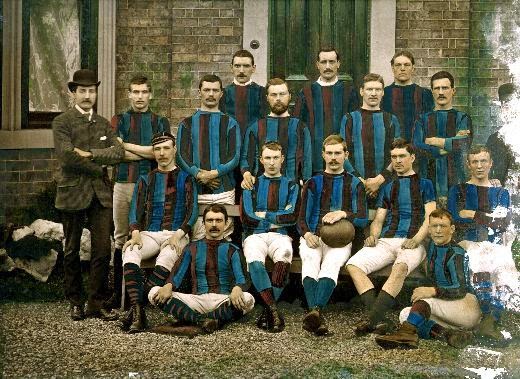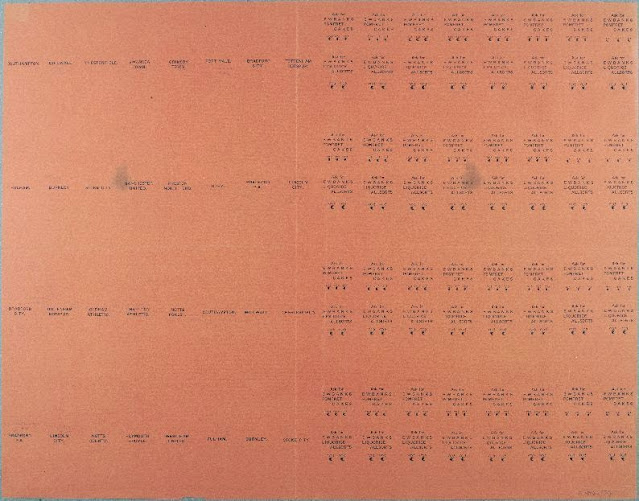Style Picks opens on 28 June 2014 , this exhibition will be a magnificent celebration of our beautiful costume
collections.
Four guest curators have raided Wakefield Museums’ wardrobe
to create a rainbow of women’s wear trends, from the 1730s to today.
Here they explain, in their own words, what has inspired their interest in clothes, shoes and accessories.
Karen Noden
Hoops A Daisy was founded in 1987 when my Mum made the
hooped petticoats to go under my wedding dress and the dresses of my 5
bridesmaids. She was then asked by friends and family to make hoops for their
weddings. She hit on the idea of hiring out the hoops and named the business
Hoops A Daisy. From there she gradually built up the business working from home
and eventually moved into the shop in 1989. Although I worked for Barclays Bank
for 17 years, I was involved in helping Mum from the start and I bought the business
when she retired in 1999. Since then I have continued to expand, so that as
well as everything for the Bride and Bridesmaid we now stock Special
Occasionwear and Promwear. I am proud to say that we have won several awards,
last year we won the ‘Best Specialist Retailer’ award and were runners up in
the Best Customer Service category of the Wakefield Retail Awards.
I have always been interested in history and a few years
ago I helped to stage a show of historical wedding dresses for charity. We held
it at Wakefield Cathedral which was a very appropriate setting as we had
replicas of many Royal wedding gowns in the show. In the 27 years I have been
involved with the Bridal Industry it has been fascinating to see so many
fashions come and go. My own favourite style of dress would have to be a full
skirted gown made of many layers of tulle which gives a floaty, romantic look
and flatters most figures. I also love crystal beading and I always appreciate
good workmanship in the boning and seaming details. My favourite fabric is
Mikado Satin which is probably the polar opposite of Tulle but it is a very
classic fabric and looks amazing on a slim fitting, plain dress. The
workmanship when using Mikado has to be superb as the cut, stitching and seams
are very noticeable.
The current trend for lace dresses shows no sign of
waning but the corset style bodice is definitely giving way to button backs and
the most popular style of dress at the moment is the ‘mermaid’ or ‘fishtail’
style. Colour is becoming more popular with soft pinks and gold but Ivory is
still the choice of most Brides.
Debbie Lough
Deborah
Lough trained in millinery at Leeds College of Art, graduating in the summer
of 2013.
She
designs and makes modern head wear for men and women. Her style leans towards
restrained simplicity, or pared back elegance, but on occasion she does give
vent to her wilder side, and produces experimental, or avant garde pieces. What one of her friends referred to as 'weird
hats'!
Debbie's
designs are inspired by many things - the world around her, architecture, art,
history, film, even music, but her love of art deco is a recurring theme.
She
designs two small couture collections per year, plus one bridal couture
collection, as well as a number of limited edition pieces, and while she's
happy to produce any piece from a collection to order, these are often the
starting point for bespoke commissions.
Debbie is happy to discuss one-off pieces, either face to face, or long
distance.
Debbie is
also about to introduce her diffusion collection (including a bridal range), 4B
by Deborah Walton
Thanks to a minor obsession with the history of
fashion, (and her background as an historical costumer), Debbie also makes
historical / theatrical headgear from any period of history, for men and women.
Most of Debbie's hats and headpieces are hand made in her studio, in Yorkshire.
Few of them go near even a sewing machine, let alone a factory.
Like her couture work, Debbie's 'diffusion' collections are designed and
assembled 'in-house', at her studio, although some from pre-made components.
Debbie's journey with a needle began a long time before she began making hats,
though. She started out on a council estate in Whitley Bay, in the north
east of England, closer to the Scottish border than to London (it took her
until she was 17 to get there for the first time). As an inquisitive
little girl being brought up by her grandmother, she wanted to know
"WHY?" about everything (Debbie, not her grandmother, that is).
Slightly worryingly for her Nana, the specific 'why' that she wanted to
know most about was to do with fingers and sockets. So when most kids her
age were watching The Flumps, she picked up her first needle and started making
things, under the careful guidance of her Nana, who had trained in tailoring in
the 1930s. The most common phrase for some years became 'it's not
straight, do it again'!
Fast forward a few years, to an equally inquisitive ten year old, with a set of
sewing skills, and a low boredom threshold. Debbie decided to learn about
more than just the sewing of garments, and found a book in the local library
(where she spent lots of time), in Monkseaton, all about pattern cutting (this
was 'Metric Pattern Cutting', that she later used at university).
Shortly after that Debbie designed her first dress, for a Blue peter
competition - she didn't get anywhere, but the design bug bit.
Since then, Debbie has designed and made all sorts of pieces, including
historical costumes and wedding dresses, flags and embroidery, which have been
seen on UK and US television, as well as at some prestigious locations (such as
Eltham Palace, The Tower of London, and Apsley House (aka Number One, London),
among many others).
In 2011, she decided to apply to go back to school to learn how to make hats,
at Leeds College of Art, got an interview, and was offered a place on the spot.
Two years later, she completed her course, gaining the highest grade
possible, a distinction.
Nicola Townend
I
have always been interested in fashion and sewing since school. I had an
inspirational teacher, who gave me the tools and confidence to try and recreate
any look that I wanted.
It
was the late 80s and Victoriana, with its high necks and it’s leg of Mutton
sleeves were all the fashion. Vivian Westwood’s collections borrowed heavily
from the historical styles she found in the London Museums. I couldn’t afford a
Vivian Westwood corset, so I made one and I still continue to make my own
clothes today.
Four
years ago I discovered Steampunk and burlesque and the fashions which went
along with it. Initially my outfits utilised purchased corsets, but it wasn’t
very long before the urge to be different soon took over and I rediscovered
corset making, creating my own corsets from historical and modern patterns.
The
urge to create my own steampunk outfits drew me to look more closely at
Victorian fashions and their construction and a chance to see the gems the
museum collection held was not to be passed up on.
Ian Harvey
Mr.
Ian Harvey gained his Batchelor in Science Degree in Podiatry (Honours) at the
Huddersfield University School of Podiatry in 1999, and after graduating from
Huddersfield, he worked with the Leeds Community and Mental Health Trust.
Here he helped patients with a wide variety of podiatric complaints, including
chiropody, podiatric biomechanics and nail surgery. He was one of the founder
members of the trust’s Biomechanics Group.
Ian
left to set up his own practice in 2003 in Wakefield. His highly professional
podiatry clinic, “FIT-FEET”, offers a comprehensive range of podiatric
services, including Podiatric Biomechanical assessments and treatments,
chiropody and nail surgery.
In
2013, Ian successfully completed his Masters Degree in Science (Clinical
Podiatric Biomechanics) with Staffordshire University.
Ian
has a particular interest in chronic (long term) pain, disability and
instability in the feet and legs. He has successfully restored comfort and
function to many people with the use of mobilisation techniques, exercises,
acupuncture and foot orthoses. His Master’s Degree research was into
improvement of stability in older people who suffer from falls.
Thank you
We would like to say a huge thanks to our guest curators who have provided a fascinating insight into our costume collections. We hope you enjoy their selections and comments on the objects they have chosen for display.















































